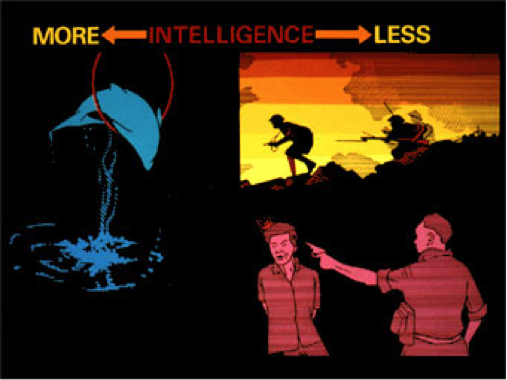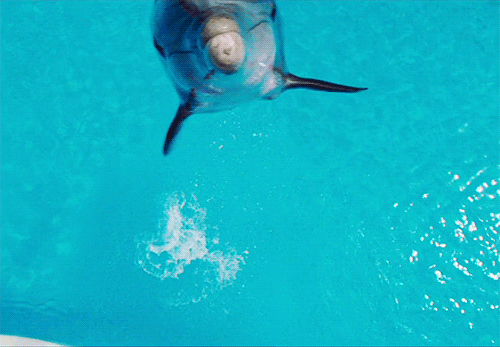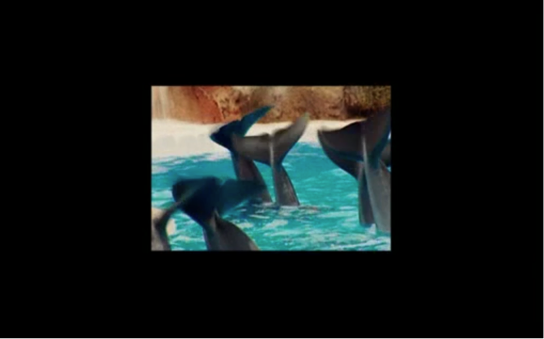
Garth Jennings’ The Hitchhiker’s Guide to the Galaxy introduces its science fiction narrative by destabilizing the assumption that human intelligence is greater than that of all other animals by conceptualizing that they are in fact only “the third most intelligent creature on the planet” and dolphins are the second.

A satirical image entitled ‘Why Dolphins are the cleverest’, created by
Rod Lord for ‘The Hitchhiker’s Guide to the Galaxy’ television series.
Intelligence here is being directly correlated with levels of violence.
The opening scene of the film introduces this reversal of intellectual superiority by displaying a montage of old-fashioned clips of captive dolphins staging a ‘performance’ for a crowd of humans in a theme park. With our understanding of captive dolphins’ behaviours performed primarily for entertainment purposes, we assume they are learned routines taught by human trainers. However, this scene destabilizes this view by informing us that, in the realms of the film, the bodily movements and enactments made by dolphins are an attempt to communicate with the human audience as opposed to performing a set of behaviours learned purely for amusement purposes.

The final message the dolphins try to communicate with the humans before they flee Earth –
demonstrating the ‘captive’ dolphins perceived the fish their ‘trainers’ gave as positive
reinforcement as simple generosity.
In keeping with the film’s title, a voice over working as a guide for the audience, and some of the characters, is used to establish this new understanding of dolphins and other scientific concepts of the film that require explanations.
The documentary-esque style of the voice over brings a comedic affect to the scene by satirizing the binary of man over animal and challenging the validity of this view through the idea of simple miscommunication. As a science fiction/comedy hybrid, the film is based on “facts” within the realms of the film that could be understood as filmic actuality. These “facts” are based on the overturning of normative understandings and binaries we as the audience believe to be true as a means of creating a humorous response.

The idea of documentary and television culture is also in play during this scene as the whole sequence is presented through a smaller screen surrounded by a large mass of blackness around it. This alludes to the idea that the documentary is being watched, on a screen, by someone or something that is most likely not human, (alien, animal or robot for example), as the majority of the human race is now extinct. This reinforces the idea of other species, whether living on Earth or not, being just as or even more intelligent than humans, as they too have developed a culture that values television and informational programs.
Therefore, the satirical comic reversal in this scene is used to undermine conventional expectations relating to human superiority by playing with recognizable tropes of film-making and accepted human-animal practices such as theme parks and zoos in order to draw attention the absurdity of human hierarchies over animal lives.